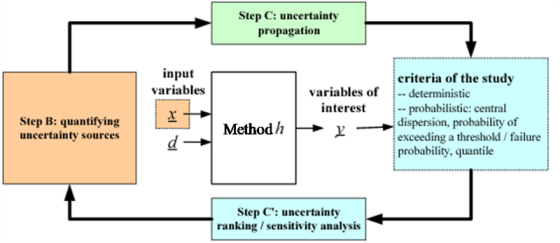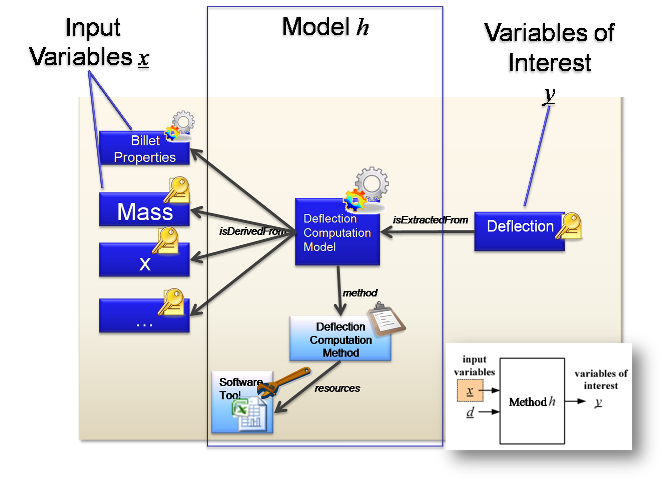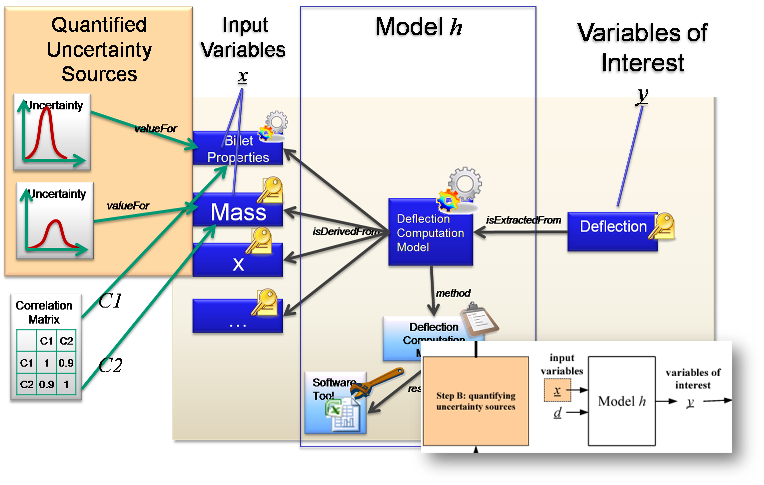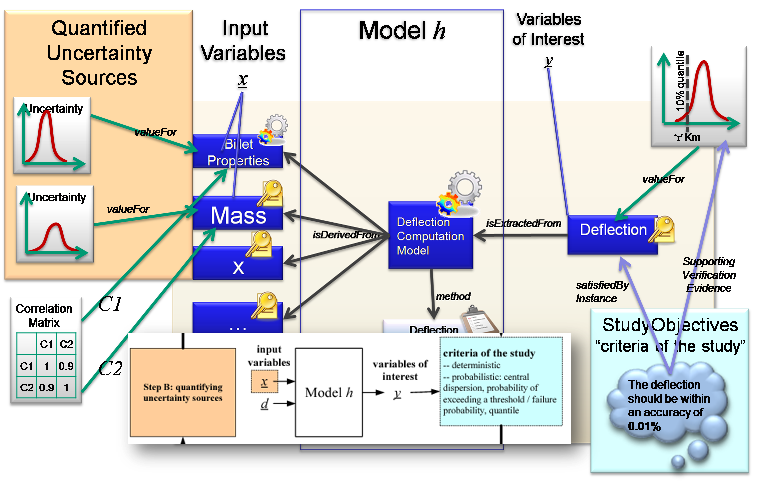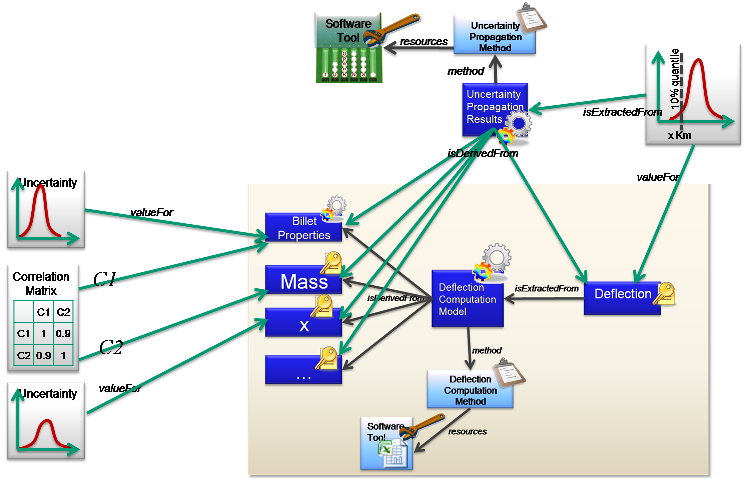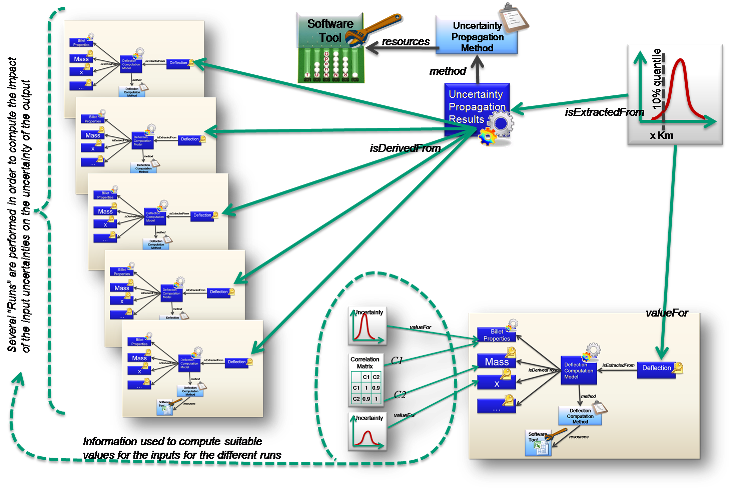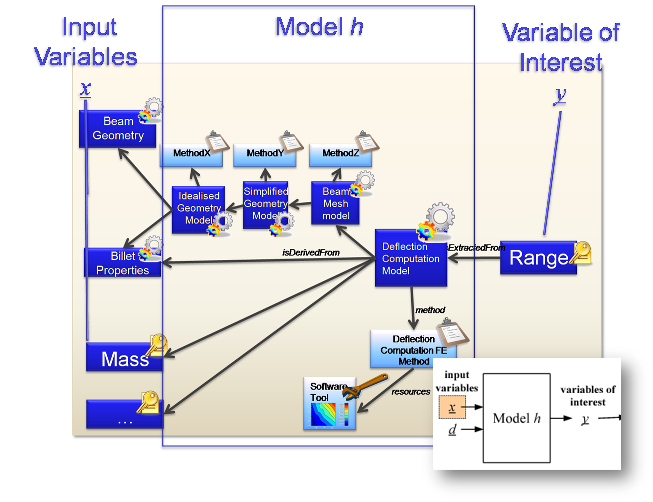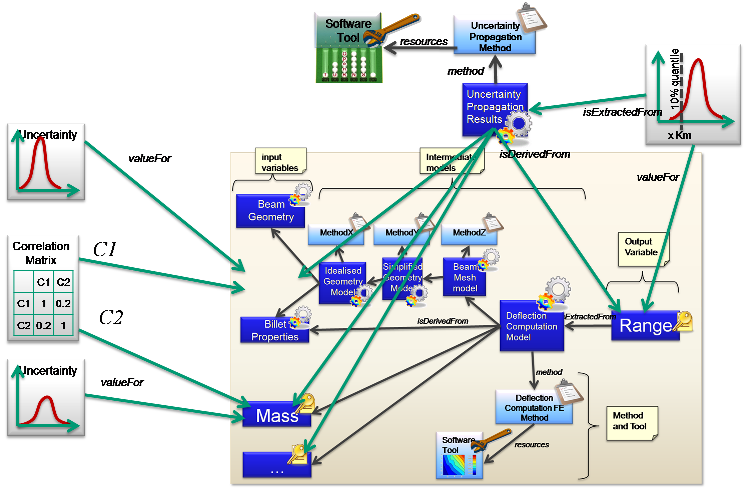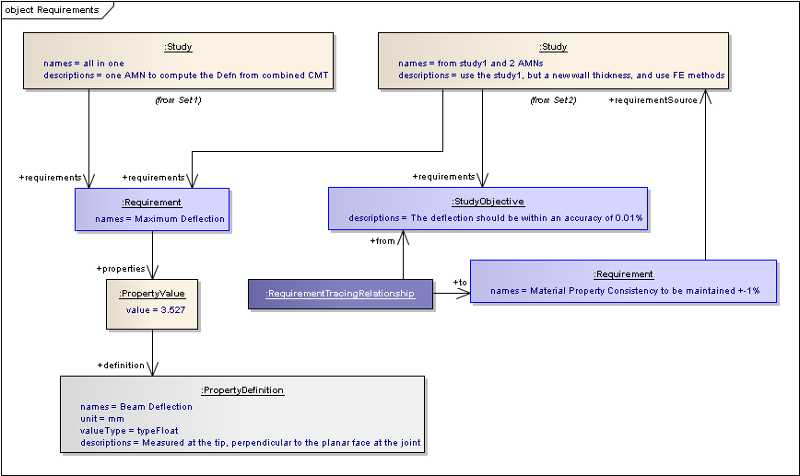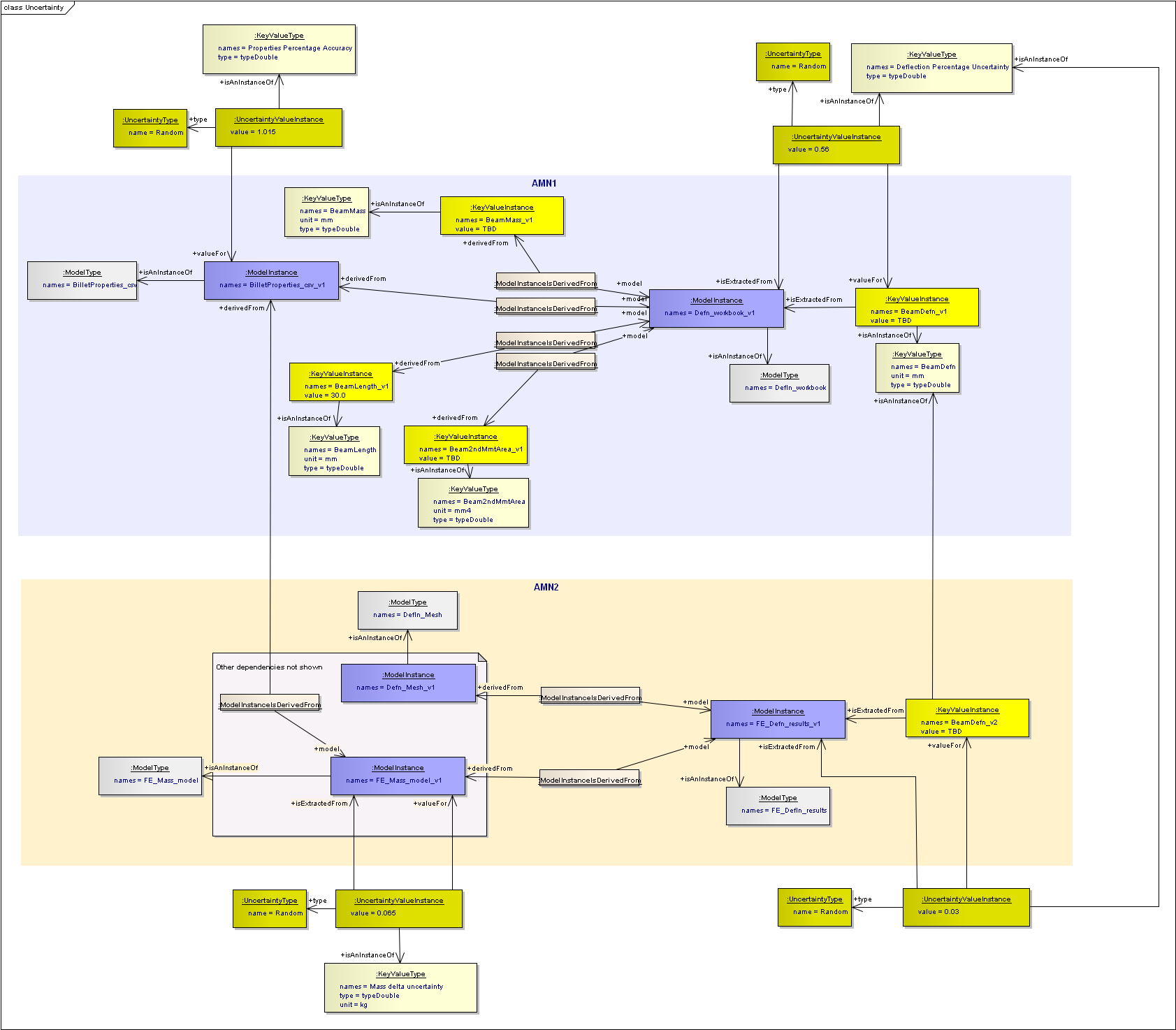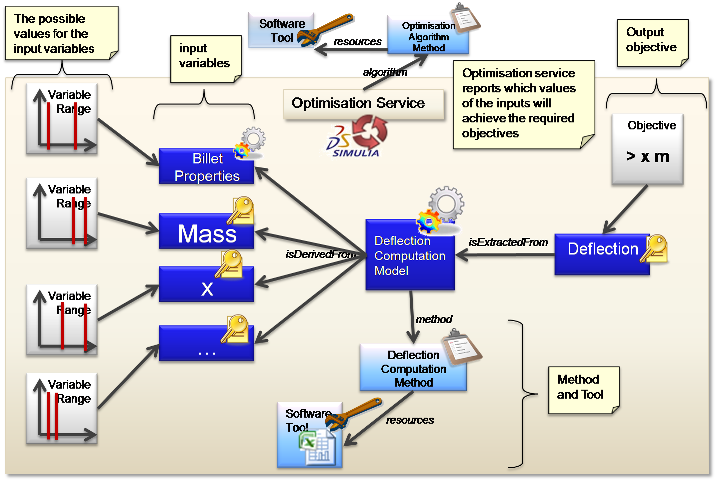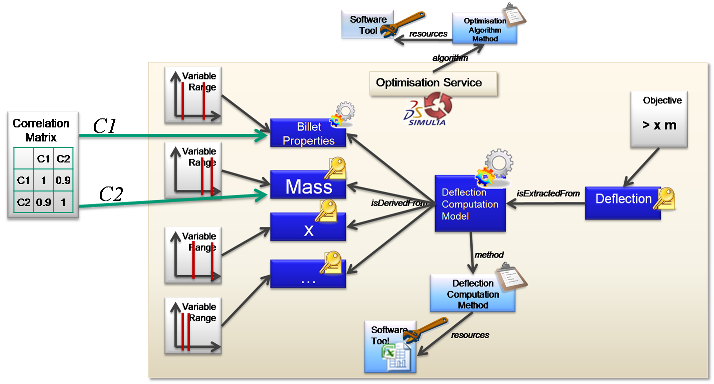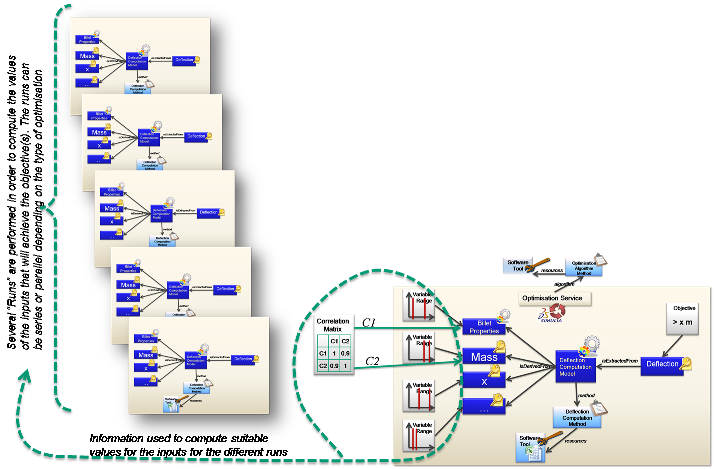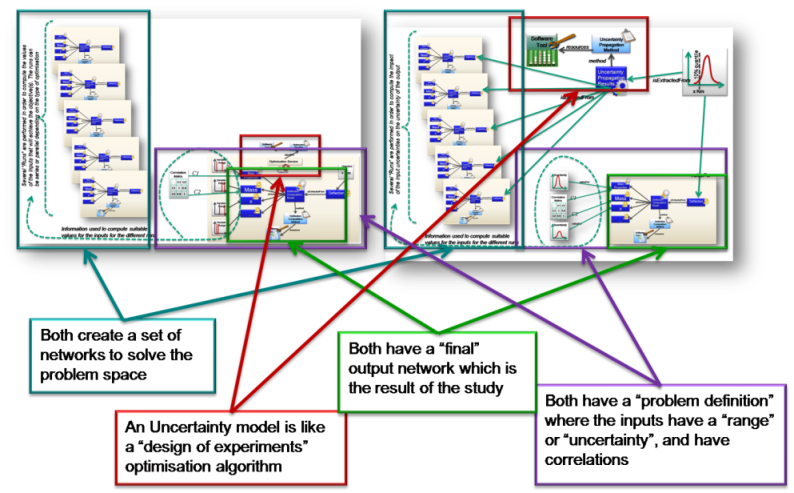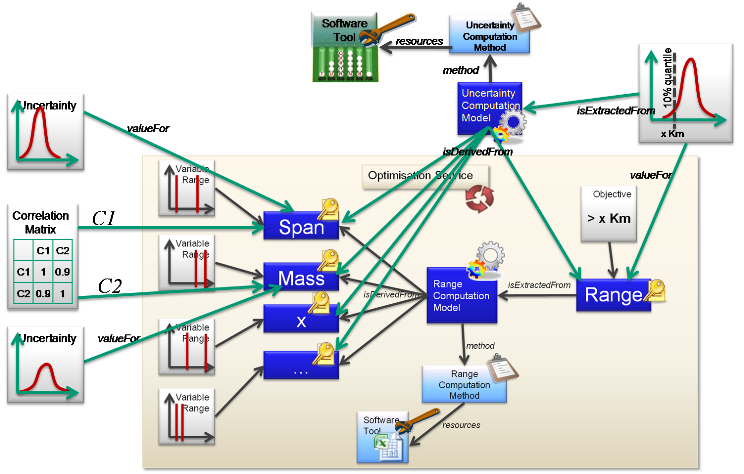Uncertainty Studies and Modelling¶
Overview¶
Uncertainty modelling wraps around a simulation as shown below.
Here simple method h has inputs z and outputs y. The quantified uncertainties for the inputs are determined (orange), and the propagation to the Uncertainty on the output is computed (green), based on the analysis requested by the Study (cyan).
Single step intermediate computation example¶
This section builds up the overview picture using a scenario from the Very Simple Example. The first step is to determine the input-method-output objects. This is shown below:
Simple Deflection Computation Method ‘h’ with Billet properties, mass, etc ‘x’ and outputs Deflection Computation Model ‘y’ The Uncertainty values for the inputs are then determined. These are shown as parametric distributions in the example because they are based on manufacturing processes with inherent variability. The example also shows a Correlation matrix between two of the inputs. The values here are low, meaning that there is very little Correlation between the material properties and the mass.
The Requirement that the Uncertainty of the output must be within a certain quartile is added to the output. This means that the uncertainty objects are anticipated on the outputs, but without the values yet computed. Effectively the Deflection will satisfy the requirements, and the uncertainty value will be the evidence for the verification. (see also Requirements and Verification)
Finally the method to compute the propagation of the Uncertainty from the inputs to the outputs is added (in green). This is a new model to compute the uncertainty that has the same inputs as the deflection model, but this method will use the uncertainties and correlations associated to them. It has a method and tool associated to show how the uncertainty model was computed. Finally the uncertainty value is extracted from the model. This provides the full traceability of what is planned, and after the computation, what actually happened.
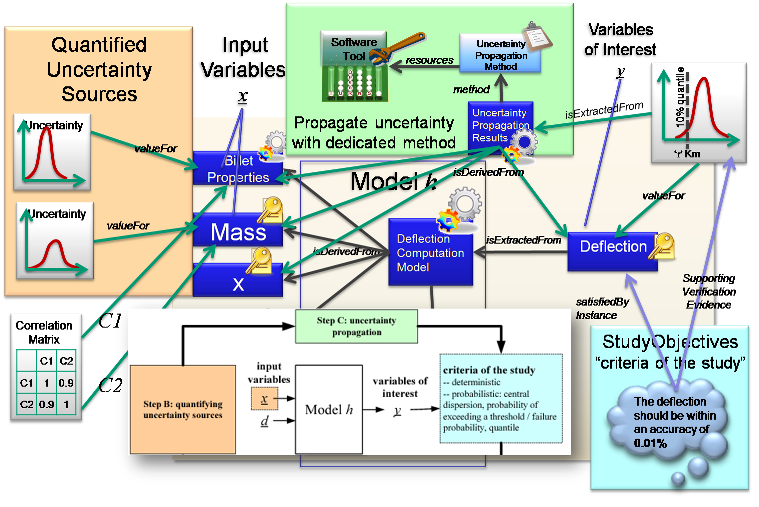
Uncertainty Propagation Results model added, with method and tool. Provides traceability for uncertainty values.
So far this example has assumed that the output Uncertainty can be computed from the input uncertainties as shown below. (Note: The “Uncertainty Propagation Results” node may not actually have any “results” attached at the end of the analysis, but it is needed as a place to capture the who/how/when/etc meta-data for the quartile computation).
In the case where the “Uncertainty Propagation Method” uses sampling techniques, the input uncertainties and Correlation information are used to set up several “runs”. The results from these runs are used to compute the Uncertainty on the output(s). The “final” output is given a value above the required uncertainty quartile.
There is no limit to how complex the “Model h” can be. The example below shows that it is actually an associative network of models that are to be computed to get from the input uncertainties to the output uncertainties.
As with the simple example above, the uncertainties, and propagation methods are added as shown below:
Optimisation and Uncertainty¶
Optimisation Equivalent¶
The diagram below shows the set-up for an Optimisation of an Associative Model Network. The inputs have a range associated with then. This is modelled as a continuous uniform distribution. This is the same distribution class that is used to describe the normal distribution for an Uncertainty on the input.
Correlation allows you to reduce the number of iterations, as some combinations of input variables will not occur.
Several “Runs” are performed in order to compute the values of the inputs that will achieve the objective(s). The runs can be series or parallel depending on the type of Optimisation. If the optimisation is a “design of experiments” there may be an additional run at the end to prove the conclusion. For an iterative optimisation, the final run will be the result.
Optimisation and Uncertainty parallels¶
As can be seen from the above examples there are many parallels between an Uncertainty Study and an Optimisation Study. These are illustrated below.
Combined Optimisation and Uncertainty¶
The diagram below shows a combination of Uncertainty on the input variables, which have some correlations defined. All feeding into an optimisation with the results analysed and an uncertainty on the outputs computed.
Enterprise Architect Documentation¶
See SysML - Uncertainty for more details.
Section author: Judith Crockford
